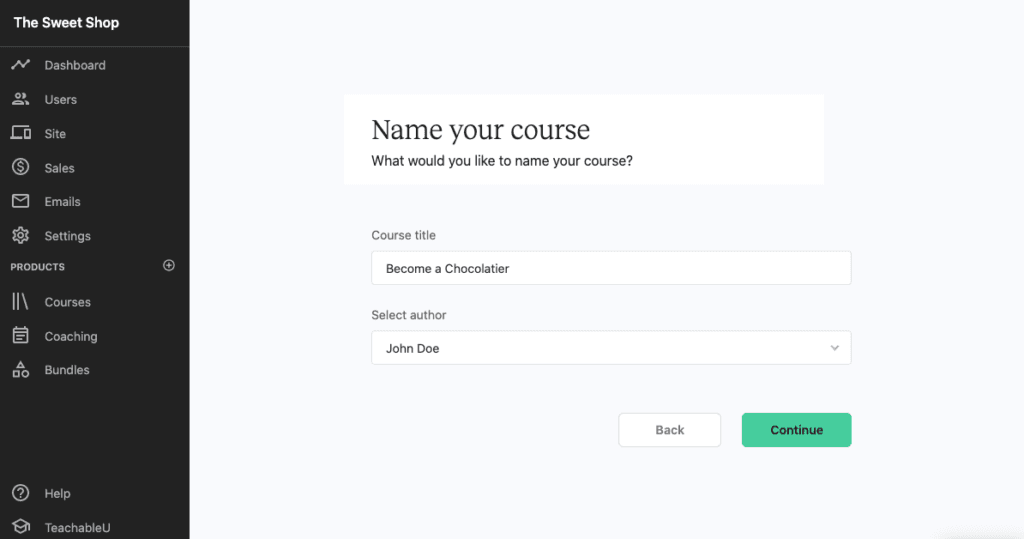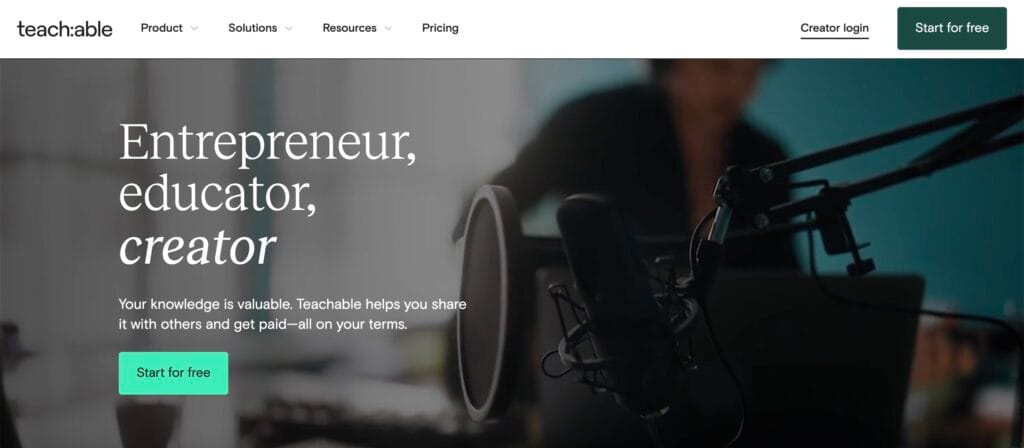Creating an online course is a rewarding way to share your knowledge and earn extra income. Whether you’re an expert or passionate about a topic, online teaching helps you reach people everywhere. You don’t need fancy equipment or experience to get started—just a clear plan and dedication.
Many people are looking to learn new skills online, and now is a great time to offer something valuable.
If you’re ready to take the first step, this guide will walk you through how to create an online course from start to finish.
Intro Phase On How To Create An Online Course
The first steps on how to create an online course involve these essential parts. These foundational steps are critical to setting yourself up for success as an online educator.
1. Choose a Topic You Know Well
When deciding how to create an online course, choose a subject you're passionate about. This ensures you enjoy teaching it and keeps you motivated throughout the process.
Think about your skills, hobbies, or work experience. What do people often ask for your advice on? Your expertise is a valuable resource that others may find helpful.
For example, I’ve chosen to create a blogging course because it’s a topic I’m not only knowledgeable about but also passionate about sharing with others.
When you teach something you love, it translates into engaging and relatable content. Start by jotting down topics that excite you and identify areas where your knowledge can solve a problem or meet a demand.
Suggested reading: How to Turn a Hobby Into a Home Business
2. Understand Your Target Audience
Knowing your audience is key to creating a successful course. Who will benefit from your knowledge? Consider their challenges, goals, and skill levels. Tailoring your course to meet their needs makes it more valuable.
For instance, if your audience comprises beginners, avoid using overly technical jargon.
This step is critical when learning how to create an online course that resonates.
From personal experience, I’ve found that understanding my audience’s pain points and aspirations not only helps me structure my course but also builds trust with students.
Imagine you’re speaking directly to one person—this helps make your content more personal and effective.
3. Research and Plan Your Content
Start by breaking your topic into smaller, manageable sections. Outline each module and lesson clearly.
Make sure every section builds on the last. Researching existing courses can help you identify gaps to fill.
A well-organized plan ensures your course is easy to follow and comprehensive. From experience, planning content thoroughly saves time during the recording and editing phases.
I recommend creating an outline that includes the main topics and subtopics, along with specific learning objectives for each section.
This method ensures that your course delivers measurable value to students.
Suggested reading: Free Blogging Course
Choosing the Right Online Course Platform & Setup
When learning how to create an online course, your platform matters. Teachable is one of the best options available.
It offers user-friendly tools to upload lessons, track student progress, and manage payments.
Platforms like Teachable simplify the process so you can focus on teaching.
Teachable is by far my favorite online course builder because of how easy it is to use. It’s also the platform I’ve chosen for my blogging course, as it allows me to create and manage content effortlessly.
You can also create a course for free, although functionality can be somewhat limited with this plan.
However, it’s a great first step to organize before committing to a Teachable subscription plan.
Sign up for your Teachable free plan here to get started in building your online course.
Create Engaging Course Material
Make your content as engaging as possible. Use a mix of video lessons, quizzes, and downloadable resources.
Keep videos short and focused. Visual aids like slides and charts can enhance understanding.
Engaging content keeps your students interested and motivated. One way I’ve made my lessons engaging is by incorporating real-life examples and storytelling.
Students are more likely to retain information when they can relate it to practical scenarios. Additionally, interactive elements like quizzes not only test knowledge but also reinforce learning.
Record and Edit Your Lessons
Record your lessons in a quiet environment with good lighting. Use a quality microphone for clear audio. Editing software can help you polish the final product.
Ensure your videos are professional but authentic. Students appreciate clarity and effort when learning how to create an online course.
Set a Fair Price
Pricing your course can be tricky. Research competitors to see what similar courses charge.
Offer discounts or early-bird rates to attract initial students. Your price should reflect the value of your content while remaining competitive.
It may be tempting to set a high price at first, but this is the opposite of what you should do. Start low on your price point to get an idea of how well your course is doing and what needs to be edited.
After perfecting your course, you can bump the price up over time based on your adjustments and additional content that you add.
For my blogging course, I’ve chosen an initial lower price to gather feedback and refine the course before raising the price to match its full value.
Market Your Online Course
Marketing is essential when learning how to create an online course that sells.
Use social media, email lists, and blogs to promote your course. Collaborate with influencers or offer free previews. Highlight the benefits of your course to attract more students.
I’ve found that sharing behind-the-scenes content on social media helps build anticipation and trust with potential students.
For example, showing how lessons are created or offering sneak peeks of the course content can drive interest and engagement.
Engage with Your Students
Interact with your students to keep them engaged. Respond to questions and provide feedback on their progress.
This creates a sense of community and ensures students feel supported.
A positive experience encourages them to recommend your course to others.
A great way to interact with your students is by creating a dedicated Facebook group for your course where they can ask questions and provide feedback.
In my blogging course, I’ve implemented this strategy to foster a community where students can share their wins and challenges.
Update Your Course Regularly
As trends and information change, update your content to stay relevant. Regular updates show students that you care about delivering the best value.
This is a crucial part of understanding how to create an online course that remains successful long-term.
For instance, I’m planning to update my blogging course with new case studies and tools as the industry evolves.
Keeping content fresh ensures students continue to see value in your course.
Suggested reading: How To Work From Home As A Blogger
Use Feedback to Improve
Ask students for feedback to understand what works and what doesn't. Use this information to improve future courses.
Continuous improvement helps you grow as a course creator and build a strong reputation.
Common Questions On How To Create An Online course
Here are some responses to the most common questions related to online courses:
How do I make my own online course?
To make an online course, outline your content, record engaging lessons, and choose a platform to host it.
Teachable offers tools to create, host, and sell courses, with a free plan for beginners.
Use video, downloadable resources, and interactive content to enhance the learning experience.
Promote your course through social media, email, and partnerships to reach a wider audience. Test the course to ensure it meets your audience's needs.
Provide consistent support and updates to maintain engagement. Focusing on a well-defined niche can help you attract the right students for your course.
How much does it cost to create an online course?
Creating an online course can cost anywhere from $0 to $10,000, depending on tools, equipment, and marketing efforts.
Platforms like Teachable offer a free plan, reducing upfront costs for new creators.
Using free or low-cost tools for recording, designing, and editing helps manage expenses. Professional services for video editing or graphic design can increase costs.
Marketing expenses, such as ads or email campaigns, also add to the budget. Starting small and scaling as you grow is cost-effective.
Regularly tracking expenses ensures your budget stays on track while maximizing your course's potential for success.
Suggested reading: Student Loan Debt: How to Prepare and Eliminate Debt Efficiently
Is creating an online course profitable?
Yes, online courses can be highly profitable with the right audience and valuable content. Teachable's free plan makes it affordable to start selling courses.
Low initial costs, coupled with high scalability, allow creators to maximize earnings.
Courses on evergreen or in-demand topics tend to generate consistent income. Marketing strategies, like social media and email campaigns, help attract more students.
Offering additional resources, such as coaching or community access, boosts profits. Providing updates and maintaining quality ensures ongoing sales.
Success relies on delivering value and building trust with your audience to create a sustainable income stream.
Suggested reading: Million Dollar Business Ideas: The Most Profitable Business Ideas
Final Thoughts On How To Create An Online Course
Learning how to create an online course can feel overwhelming, but with the right steps, it's achievable. Choose a great platform like Teachable to simplify the process which offers a free plan for beginners.
With dedication and effort, your course can inspire and educate people worldwide.






